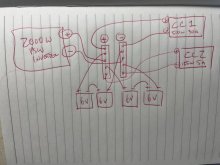robstrom
New Member
In my system build (which I've posted prior), thought is a bus bar simply for negatives on the 12 volt fusebox side, rather than to the fuse panel.
Simply, to avoid clutter.
I'm using Will's idea of mounting components to a piece of plywood, w 1 exception:
12 volt fuse block/bus bar mounted separately.
Possible future removal to a fixed structure, without having to disassemble my trailer wiring at all, other than pull pos/neg off fuse block.
Simple system, only 6 DC circuits, and small fridge AC.
Simply, to avoid clutter.
I'm using Will's idea of mounting components to a piece of plywood, w 1 exception:
12 volt fuse block/bus bar mounted separately.
Possible future removal to a fixed structure, without having to disassemble my trailer wiring at all, other than pull pos/neg off fuse block.
Simple system, only 6 DC circuits, and small fridge AC.



